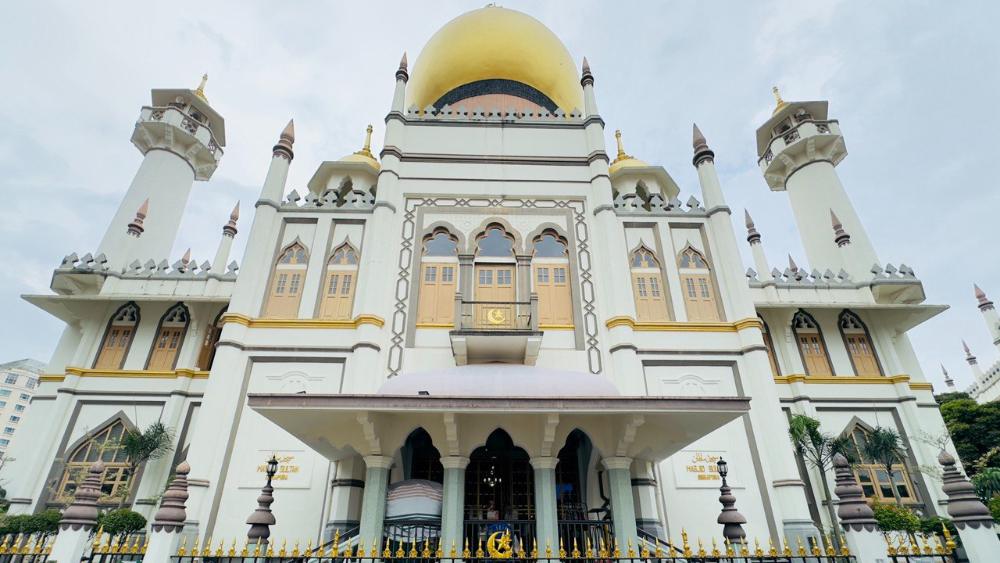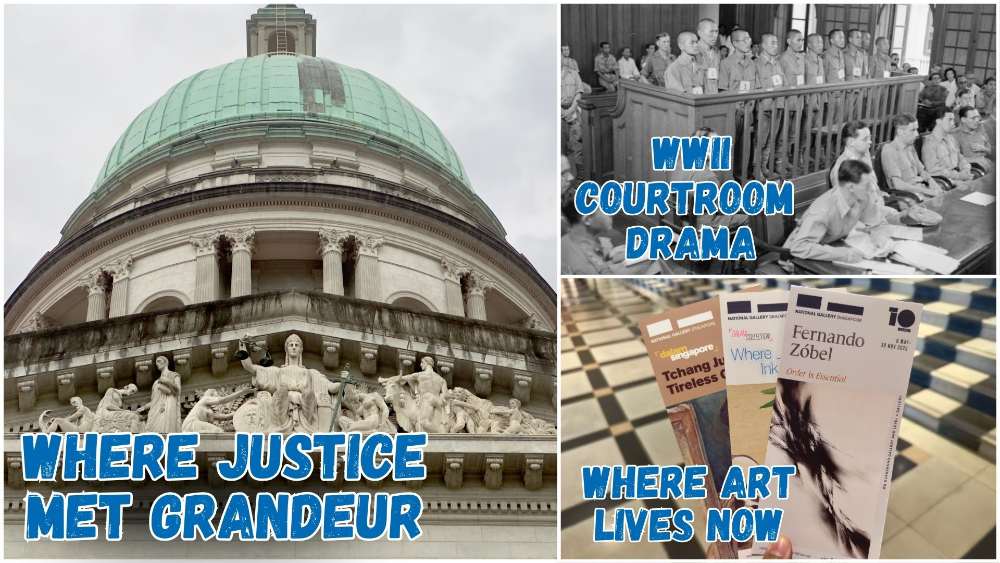National Monuments Of Singapore: Sultan Mosque
What is a National Monument? Who gazettes them? How many national monuments are there in Singapore? To date, the Preservation of Sites and Monuments, a division of National Heritage Board, has identified and gazetted 75 buildings, structures and sites of national significance as an integral part of Singapore’s built heritage.
And we're here to tell you all about them - one National Monument at a time!
You've probably passed by or stepped into more than a few of them without realising they were National Monuments: Al-Abrar Mosque, Asian Civilisations Museum, the Civilian War Memorial, Saint Andrew's Cathedral, the Esplanade Park Memorials, Fort Siloso on Sentosa - no need to plan an itinerary for friends visiting from overseas; just show them this article ✌️
In this edition, we draw your attention to what many in Singapore consider as our Little Red Dot's national mosque, Sultan Mosque.
📍 Location
Sultan Mosque was the 14th building to be gazetted as a National Monument, and is located near other National Monuments such as Istana Kampong Gelam, Church of Our Lady of Lourdes, and Hajjah Fatimah Mosque. The MRT stations nearest to it are Bugis, Nicoll Highway and Jalan Besar.
📅 Significant dates
Dates built:
- 1824-1826: Sultan Mosque was constructed; the original structure was a single-storey building with a double-tiered roof
- 1924-1932: The mosque underwent extensive reconstruction and was expanded
- 1968: Repairs were made, walls were painted, and new floor tiles were installed
- 1987-10 Jul 1993: A three-storey annexe building was built as an extension
Milestones:
- August 2014-January 2016: The mosque received a significant facelift, led by the Islamic Religious Council of Singapore (Majlis Ugama Islam Singapore, or MUIS)
- 2016: Sultan Mosque was awarded the prestigious Architectural Heritage Award from the Urban Redevelopment Authority (URA)
Date gazetted: 8 Mar 1975
📜 History
In 1819, Sultan Hussein Shah agreed to allow the British East India Company (EIC), represented by Sir Stamford Raffles, to establish a trading post on the island of Singapore. As part of this agreement, Sultan Hussein wished for the construction of a mosque in 1824, near his istana (Malay for "palace") in Kampong Glam.
Sir Stamford Raffles contributed thousands towards the construction of the mosque, which was completed in 1826 as a single-storey building with a double-tiered roof.
In 1879, the mosque was presented with gifts of land from Sultan Alauddin Alam Shah (grandson of Sultan Hussein), and Tunku Aleem (an unknown benefactor).
In 1924, due to the mosque's age and the need for repairs, a proposal was made by the mosque's trustees to construct a new and larger mosque. Irish architect Denis Santry from local architectural firm Swan & McLaren was in charge of the project. If his name seems familiar, he's the man who was also responsible for the Cenotaph and Telok Ayer Chinese Methodist Church.
The new Sultan Mosque was completed in phases (partly due to fundraising issues, and to avoid interrupting worshippers), and formally opened on 27 Dec 1929, with two-thirds of the mosque completed. Construction only concluded in 1932.
In 1968, the mosque underwent repair work largely funded by donations from the Muslim community and King Faisal of Saudi Arabia. The renovation included painting and the installation of new floor tiles.
In 1987, an extension, in the form of a three-storey annexe, was added to the mosque. This was supported in part by donations from the World Muslim League in Saudi Arabia. Then-Prime Minister Goh Chok Tong officiated the opening of the new annexe.
The most recent major renovation occurred in 2014 under the Mosque Upgrading Programme led by MUIS, which included restoring original features, rewiring, retiling, and the addition of new facilities such as lifts and an auditorium. Prime Minister Lee Hsien Loong unveiled a plaque on 16 Jan 2016 to commemorate its completion.
Over the years, the mosque has served as a central hub for religious, cultural, and social activities. During Ramadan (the Muslim month of fasting), a bustling night market with a plethora of food stalls emerges near the mosque, where Muslims congregate to break their fast with the call to prayer at sunset.
📐 Design and architecture
Like many mosques of its time, such as Hajjah Fatimah Mosque, the design of Sultan Mosque was deeply influenced by the Indo-Saracenic style, which blends Indian and Islamic architectural elements with European influences.
Enclosed by cast-iron railings, the mosque's front and rear facades are adorned with magnificent arabesque mouldings, while Islamic merlon cresting (vertical and rectangular protrusions at regular intervals) lines the roof parapet, interspersed with miniature minaret-like (slender, tower-like) structures.
The mosque is distinguished by its two grand ogee-shaped (onion-shaped) domes, situated at the eastern and western ends of the prayer hall.
One dome crowns the main entrance foyer, while the other adorns the impressive mausoleum housing Sultan Alauddin Alam Shah (grandson of Sultan Hussein) and other members of the royal family.
Each dome is adorned with a crescent moon and star, symbols synonymous with Islam. Encircling the base of each dome are glass bottles donated by the less fortunate as their contribution to the mosque's construction.
The main prayer hall, rectangular in shape and defined by 12 octagonal columns, is angled to align with the qibla (the direction of the Kaaba in Mecca towards which Muslims should face when praying). With a capacity for 5,000 worshippers, the two-storey hall features a mihrab (a niche in the wall of a mosque that indicates the qibla) embellished with intricate arabesque scroll motifs, leaves, flowers, and classical vines.
The building's interior is well-ventilated as a result of numerous windows on both levels; louvred timber shutters and patterned vents on the ground floor; and variously shaped fenestrations (the arrangement of windows) on the second floor, including ornate cinquefoil (an ornamental design of five lobes arranged in a circle) windows.
🕖 Opening hours
The mosque is open daily, except during prayer times, Sundays and Public Holidays. Find out more here.
🎟️ Admission
Entry is free, but do take note of the proper attire required.
For the latest updates on Wonderwall.sg, be sure to follow us on TikTok, Telegram, Instagram, and Facebook. If you have a story idea for us, email us at [email protected].









